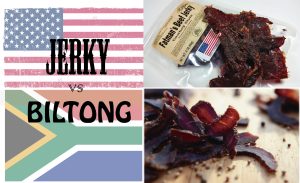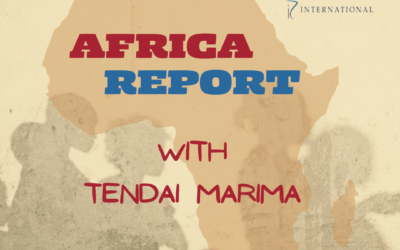
Umm Muhammed Umar
Phillip de Wet, Deputy Editor, Business Insider, South Africa spoke to Radio Islam about Americans having developed a taste for (pun intended) South African biltong.
De Wet said that a company called ‘Stryve’ has been popularizing biltong in America. They have been raising funds to open a second factory in the US. Stryve already has, according to de Wet, one fairly large factory running in middle America. he said, “the biltong has been appearing on shelves all over the place, in many of the major chains, in 7-Eleven, and in Costco and Walmart.” He added, “if you now walk in, you’ll find these small packets of biltong, and what they call ‘biltong sticks’, which are actually dry wors, but they decided they couldn’t popularize that name, too.” Stryve is reportedly slowly teaching Americans that, in terms of dried meat, biltong is much better than the beef jerky that they have traditionally been eating. The company is also confident of being able to sell vast amounts of biltong in America in the future.
De Wet explained that there was a world of difference between biltong and beef jerky. He said, “the things that they do to beef jerky is just astonishing. For starters, there’s often quite a lot of sugar involved. Jerky aficionados will tell you that you have to flavour it with something really powerful like pepper or teriyaki sauce, because it’s just so awful.” He explained that the jerky was so ‘awful’ as compared to biltong, in part because heat is used to dry it. Biltong, meanwhile, is air dried. The American beef jerky is actually baked to drive moisture out. De Wet said that the world was moving towards high protein snacks, so biltong fits the bill, and because there was no sugar involved in making biltong, it is marketed as a very low carbohydrate snack.
While Americans were actually becoming familiar with the term biltong, it did not seem that South Africa could take credit for having invented the product. De Wet said that there had probably been a melding of cultures, which resulted in the invention of biltong. However, he emphasized, “But there is nothing quite like it in the rest of the world. The exact process of marinating it, the air drying it is quite unique. So, we haven’t come across anything exactly like it, but perhaps the most popular other contender is jerky. It’s one of the few dried meat products that has survived into the modern age.” He explained that dry meat was not a delicacy, but a matter of survival for many people. So, there are some European variants of traditional biltong as well. De Wet said that often, South African expats took the concept of biltong elsewhere in the world, and were finding small markets for the product.
Biltong is apparently being sold at a hefty price in the US. While it was not cheap to purchase in South Africa either, it costs well over a R1000 per kilogram in the US. The reason, however, why South Africa cannot simply export the biltong to other countries, is because of the regulations around meat products in particular, especially after the incidences of mad cow disease in the past decade or so. De Wet said that it was very difficult to convince authorities, let alone buyers, to import a cured meat product from an African country. So, while Strive was marketing the name ‘biltong’, its kept very clear, and prominent, on their packaging, that it was made in the USA.







0 Comments